Davenport Campbell’s Anneke Alberto and Kathryn Marshall comment on the fallacy of averages in workplace design.

April 17th, 2025
“The tendency to think in terms of the ‘average man’ is a pitfall into which many persons blunder.”
– Lieutenant Gilbert S. Daniels, ‘The Average Man’
In recent years, we have seen an increase in awareness and understanding of neurodiversity in the workplace, and a growing empathy for the 15-20 per cent of the population with neurological differences (The Neurodiverse Safe Work Initiative 2025, par. 8). As designers, we recognise the value of environmental autonomy, calming colour palettes and clear wayfinding. But our Achilles’ heel is when we rest solely on ticking boxes, rather than designing inclusively for neurodiversity. Individual task lights: check. No repetitive patterns: check.
In 1952, Lieutenant Gilbert S. Daniels statistically discredited the existence of an ‘average man’. Using the 1950 Air Force Anthropometric Survey, he demonstrated that none of the 4063 men surveyed matched all average body measurements, concluding that the concept of an ‘average man’ is “convenient to grasp in our minds, [but] unfortunately he doesn’t exist.” Daniels concludes that this is a misleading basis for design criteria.
Designing a workplace based purely on data from statistics, precedents and executive input has the potential to create spaces that feel disconnected from their users. To design the best workplaces, we must humanise the design process by immersing ourselves in the lived experiences of those who will use the space. By doing so, we can identify and address friction points to ensure the workplace actively supports productivity, wellbeing, collaboration and focus.

Stats vs humans: How do we humanise the design process?
As workplace designers, we transform research and statistics into active, healthy and inclusive workplaces. We bridge facts and aspirations, taking our clients on a journey as we illustrate the potential of their workplace.
We build on our design experience and we grow our skills with each new project, but we recognise that no two tech companies are the same, nor law firms or universities. Work styles, design principles and ratios can be adapted for each new project, but it is your people – your individual team members – who are the key to your success as an organisation. And that makes the knowledge of your people, and their skills and challenges, the ultimate key to our success as workplace designers.
Miriam* often works longer hours as she finds the noise from her colleagues distracting, making reading and writing harder. Living with dyslexia, Miriam often separates herself in Focus Rooms, but would love to feel more connected to the team with a variety of quiet areas, such as focus pods or smaller clusters of work points with wrap around screens, that are distanced from collaboration zones and breakout areas.

Andy* is known for his attention to detail and is often asked to do the final check on his colleagues’ work. Being around people takes a lot of his energy, and when he is overwhelmed, he looks for spaces to retreat. Andy is autistic and thrives with order and routine, which makes desk-sharing a challenge. He gets in early each day to ensure he gets the same focus desk near the window where he is less likely to be disrupted.
By developing personas such as these, we have a mechanism for capturing the subtleties that make your people unique. This narrative approach can unlock clues to work styles, and the foundations of a great working environment. The personalities, preferences and habits of these personas provide an empathic overlay to our statistics and research. They become tools to help us connect with our clients. These personas can’t possibly capture the tens, hundreds or thousands of nuances of your team and their needs, but they shift our thinking from box ticking to empathy and creative thinking. They challenge pre-determined outcomes and ‘one-size-fits-most’ models.
Related: Buchan comments on AI

Moving beyond checklists
Neurodiversity lies in this nuanced environment. Designing for neurodiversity, we acknowledge that no two individuals experience the world in the same way. We introduce variety into our communication, using personas, storytelling, visual cues and patterns, and we create increased opportunities for relatability. We invite individuals and user groups to participate in the conversation, we challenge assumptions, and we create space for new ways of thinking. By fostering a deeper understanding how they interact with the world, we can move our design beyond ratios and aesthetics into a supportive, inclusive environment.
Often, the complexity of neurodiversity is distilled into a list of problems to be overcome, rather than a celebration of the skills and talents a neurodiverse individual can bring to the team. Technological experience designer and researcher Kat Holmes describes the challenges an individual may experience with their environment as a “mismatched interaction” and places onus on the designer to create environments to better suit the people that inhabit the space (Holmes 2020, pp. 2, 52).
The averages used commonly in workplace design are a poor indication of the complexities of human diversity that make up an organisation (Oseland 2025). The antidote to average lies in the willingness of the designer and the client to engage with the users of the space, allowing them to participate in the design process and considering them as more than a number.
Beyond our commitment to the neurodiversity goals of a project lies the simple joy of our vocation as designers – to understand what has been, what is needed and what is dreamed of. Ultimately, it is to design spaces that are supportive and inclusive for all individuals.
Davenport Campbell
davenport-campbell.com.au

Palace Tower by Woods Bagot is a workplace lobby project in Perth
INDESIGN is on instagram
Follow @indesignlive
A searchable and comprehensive guide for specifying leading products and their suppliers
Keep up to date with the latest and greatest from our industry BFF's!
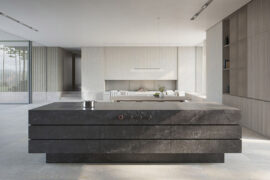
For those who appreciate form as much as function, Gaggenau’s latest induction innovation delivers sculpted precision and effortless flexibility, disappearing seamlessly into the surface when not in use.
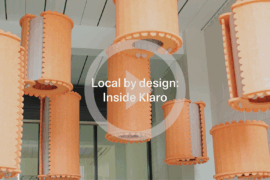
In an industry where design intent is often diluted by value management and procurement pressures, Klaro Industrial Design positions manufacturing as a creative ally – allowing commercial interior designers to deliver unique pieces aligned to the project’s original vision.
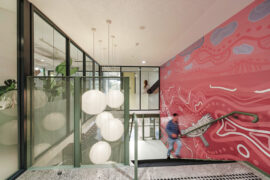
From radical material reuse to office-to-school transformations, these five projects show how circular thinking is reshaping architecture, interiors and community spaces.
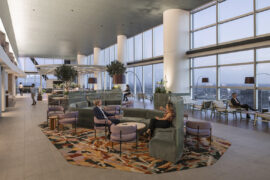
Designed by Woods Bagot, the new fit-out of a major resources company transforms 40,000-square-metres across 19 levels into interconnected villages that celebrate Western Australia’s diverse terrain.

In an industry where design intent is often diluted by value management and procurement pressures, Klaro Industrial Design positions manufacturing as a creative ally – allowing commercial interior designers to deliver unique pieces aligned to the project’s original vision.
The internet never sleeps! Here's the stuff you might have missed

Former INDE Luminary LeAmon joins the Design Institute of Australia (DIA) following more than a decade as the inaugural Curator of Contemporary Design and Architecture at the National Gallery of Victoria (NGV).
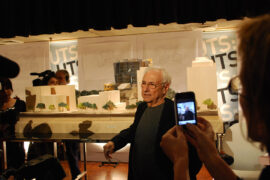
We republish an article in memory of the late architect by UTS, whose Dr Chau Chak Wing Building was Gehry’s first built project in Australia. The internationally revered architect passed away on 5th December.